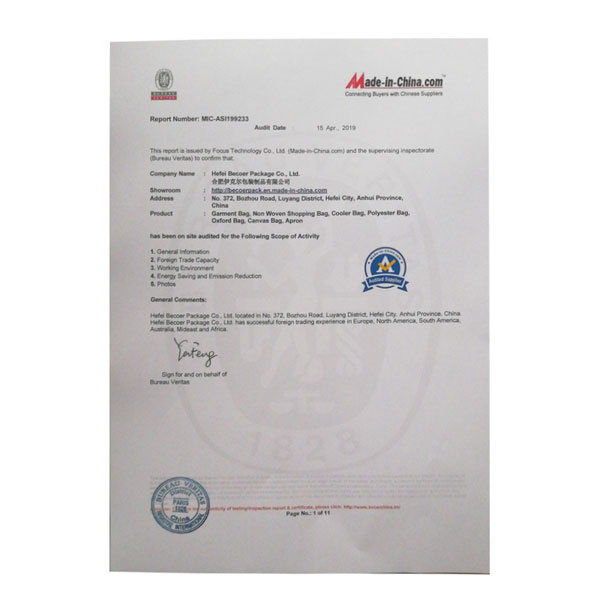Alarmingly, the health crisis seems to have reversed much of Peru’s progress in combating poverty over the last two decades. A las escuelas privadas se suman distintas propuestas en el sistema de escuelas públicas. As discussed above, in the final three years of secondary education, students can enroll in a vocational stream. Colegio Particular Bilingue con mas de 2 5 años de experiencia solicita profesores. Between 2008 and 2019, while enrollment at public ECEs grew by about 30 percent, private ECE enrollment increased by 59 percent to a little under half a million students. Secondary education (educación secundaria) is five years in length (grades 7 to 11) and is structured in two cycles, both of which are compulsory. Since the reforms were passed, 50 non-university higher education institutions received licensing from SUNEDU and were granted university-level status. AVISO LEGAL. 0 20 40 60 80 100 120 140 160 180 rú -Perú rl ica cil La PUCP ofrece becas y fondos de apoyo económico destinados a los alumnos de posgrado para su formación profesional e investigaciones. However, given the yawning disparities that currently divide the country, it is unlikely that public measures taken to date will do much to equalize access. By far the most popular type of non-university higher education is educación superior tecnológica, or higher technological education. But in March 2019, MINEDU introduced a reform to better integrate educación técnico-productiva programs with the formal secondary and post-secondary education system. As illustrated by the way Peru has handled the pandemic, the country’s ability to attract international students likely hinges on its still fragile economic and political order. Over the same period, for-profit private institutions grew from 13 to 50, while non-profit private institutions grew from 29 to 41. Los cuadernos de trabajo de Comunicación Comprensión Lector a de 1º a 5º de secundaria, han sido elaborados con el objetivo de ayudarte a desarrollar tus competencias comunicativas, de lectura, escritura y la comunicación oral. Unsurprisingly, literacy rates have also skyrocketed, growing from 82 percent of the adult population in 1981 to nearly 95 percent in 2019. Institutions at the university level (educación universitaria), the other subdivision of educación superior, enjoy a greater degree of autonomy than their non-university counterparts. Either a título de profesor or a título de licenciado in education is required to teach at a basic education school in Peru. En la actualidad existen varias opciones de enseñanza secundaria. Since the introduction of these reforms, EESTs and IESTs have offered programs of study leading to four principal titles: the título técnico (title of technician), the título de profesional técnico (title of technical professional), the título de professional (title of professional), and the título de segunda especialidad (title of second specialty). Given the quality issues plaguing much of the sector, the latter move has led observers to expect that many institutions will struggle to remain open. Of those Peruvians who do choose to study in the U.S., a plurality enroll in undergraduate programs (47 percent), followed by graduate (31 percent), and non-degree (7 percent) programs. The latter half of the twentieth century was especially calamitous, as authoritarian rule and armed conflict violently upended the lives of countless Peruvians. For example, while government data show that the illiteracy rate was just 3 percent for adult males nationwide in 2019, it was 8 percent among females. There are no final graduation examinations. Peru’s education system mirrors these political and economic developments. Antes de la pandemia, la cifra era . As at other levels of Peru’s education system, the quality of education varies widely at different non-university higher education institutions across the country. The lack of stability may also limit the government from tackling inequality after the pandemic ends. In July 2019, 23 LAC countries, including Peru, adopted the Regional Convention on the Recognition of Studies, Diplomas and Degrees in Higher Education, which seeks to “advance and boost academic mobility, in order to increase access to education.” Bilateral visa-free agreements, such as the one with Mexico, have also facilitated intraregional mobility. However, once enrolled, these students will now be required to complete 80 academic credits, or around two years of study, to graduate. Given the deep roots of these challenges, it’s unclear whether any of the changes made to date—in the political or educational sphere—will be enough to overcome them. Pagina exclusiva dedicada a la producción y distribución de materiales educativos, con la finalidad de. Until recently, basic-level students successfully completing 1,000 study hours obtained a título de auxiliar técnico (title of technical assistant); mid-level students completing 2,000 study hours obtained a título de técnico (title of technician). Since declaring its independence from Spain in 1821, Peru has gone through 12 different constitutions. The overall increase in funding also hides glaring regional disparities. No dejar a ningún niño o niña atrás: informe mundial sobre la desvinculación de la educación de los niños Corporate author : UNESCO ISBN : 978-92-3-300203-6 Collation : 147 pages : illustrations Language : Spanish Also available in : English Also available in : Français Since the law’s adoption, more than a third of once-operating universities in Peru have been forced to close. Afianza la identidad personal y social de los estudiantes. La educación en el Perú se encuentra bajo la jurisdicción del Ministerio de Educación, el cual está a cargo de formular, implementar y supervisar la política nacional de educación. SINEACE’s responsibilities include accrediting institutional and program quality, a voluntary process available to licensed universities, non-university higher education institutions, and CETPROs. Educacion superior tecnologica programs provide education and training in science, technology, and liberal arts subjects that are in demand in the labor market. About 42 percent of these were public or government-financed; the rest, private. To qualify, students must typically draft and defend a thesis or complete a project beyond those required for the grado de bachiller. Educación Secundaria. Conoce las ventajas de llevar un programa de Formación Continua en la PUCP. Mira nuestro catálogo y visita la tienda virtual donde podrás adquirir nuestras e-books y publicaciones impresas. While Peru’s early decision to suspend in-person classes at the country’s schools and universities likely helped to slow the spread of the virus, it also deepened already profound educational disparities. Programa curricular de Educación Secundaria.pdf (18.41Mb) Resolución Ministerial 159-2017-MINEDU.pdf (303.2Kb) Date 2016 Author Perú. Peru’s public school teachers union estimates that nearly 50 percent of teachers engage in additional income-generating work. University-level institutions also enroll many more students than non-university higher education. La Educación Secundaria constituye el tercer nivel de la Educación Básica Regular y dura cinco grados. The government has responded by distributing tablets and developing radio- and television-based education programs. Av. Twenty years later, the nation’s Indigenous communities voted their preferred candidate into office again. According to an OECD analysis of the scores, economic, social, and cultural status (ESCS) explained 21.5 percent of the variance in reading scores in Peru, the highest level of all participating countries. 108 talking about this. Still, high dropout rates persisted: 9 out of every 10 students enrolled in elementary education did not go on to complete secondary education. During the nearly three centuries of colonial rule that followed, the Catholic Church played the leading role in the country’s education. Sí. In recent years, a number of laws and ministerial resolutions aimed at improving quality and better integrating university and non-university qualifications have significantly altered the post-secondary, non-university landscape. Servicios académicos, de salud, consultorías, capacitaciones e instalaciones. Competition tends to be especially intense at the country’s public universities. Educational outcomes at these latter schools, which are often located in rural or remote locations, typically lag behind those at schools using a conventional Spanish language curriculum. Grado de doctor, or doctoral, programs require a master’s degree for admission. Universitaria 1801, San Miguel But while the election of Castillo, who took office in July 2021, represented a definitive break with the political status quo, with Congress still dominated by the opposition his first few months in office have proved chaotic and raised serious doubts about his ability to fulfill his campaign promises. Información sobre los vínculos de la PUCP con instituciones nacionales e internacionales. These titles are not awarded exclusively by educación superior tecnológica institutions. According to SUNEDU, Peruvian universities offered slightly more than 400 degree programs leading to the grado de doctor in 2021. Students obtaining a grado de bachiller from an EEST are now eligible for admission to graduate programs at university-level institutions. Since the expansion began, Peru’s Gini coefficient, a measure of the country’s income inequality, has fallen steadily. The impact of the reform on técnico programs is similar. The expansion of Peru’s higher education system has also occurred unevenly across the country. Reports indicate that Peru’s high school and university dropout rates, both around 12 percent in 2019, have risen swiftly since the start of the pandemic, growing to 18 and 19 percent, respectively, in 2020. As a result, some students spend up to two years at private, pre-university centers preparing for university admissions examinations. It also hides significant socioeconomic disparities. As the world continues to gradually recover from the coronavirus pandemic, these reforms, and projections suggesting that Peru’s economy will bounce back soundly, do leave some room for optimism. En Perú, existe el Programa Nacional de Movilización por la Alfabetización (PRONAMA), com-plementario del Programa Juntos. The country’s notorious strongman, Alberto Fujimori, president from 1990 to 2000, is currently serving a 25-year prison sentence for human rights abuses, corruption, embezzlement, and bribery. Among its most important outcomes was the creation of the Superintendencia Nacional de Educación Universitaria (SUNEDU) which it charged with supervising the quality of higher education throughout the country and licensing higher education institutions. Since the start of the twenty-first century, university enrollment in Peru has grown faster than anywhere else in Latin America. An even higher proportion attend elementary schools that teach a general, Spanish language curriculum—in 2019, just one in five attended a school using an intercultural bilingual curriculum, which provides instruction in both Indigenous languages and Spanish. $18.86 USD. They require students to complete a minimum of 6 semesters or 64 Peruvian credits of advanced graduate study, demonstrate proficiency in 2 foreign languages, one of which may be substituted by an Indigenous Peruvian language, and draft and successfully defend an original thesis. SUNEDU, an agency attached to MINEDU, is responsible for policy development and quality assurance in the tertiary university system. Between 2008 and 2018, enrollment in Peruvian higher education institutions grew faster than in any other country in Latin America, more than doubling from around 775,000 to 1.6 million. El acceso a los documentos es libre y no requiere ninguna inscripción ni costo. Brinda la ubicación exacta de todas las instalaciones de la PUCP, dentro y fuera del campus. These reforms also prioritize mobility between the university and non-university subsystems, expanding pathway options between the two sectors. The academic year at all levels typically mirrors that of other countries in the Southern Hemisphere, running from late February or early March to December. Fueled by rising raw material and mineral exports—the country today is one of the world’s largest producers of copper, silver, and zinc—Peru’s economy began to take off around the start of the twenty-first century. In 1551, less than a decade after the formation of the Viceroyalty of Peru, the church established the first university in the Western Hemisphere in Lima, the new colonial capital. But even those able to continue their education could face daunting prospects after graduation. More recently, corruption has helped spark political turmoil. They have also introduced provisions aimed at redrawing regional boundaries in an attempt to address concerns that the current regions are too small to be financially viable. Still, observers worry that for Peruvians forced to end their education early, many of whom are likely to be among the country’s most vulnerable, the educational consequences of the pandemic will be severe and long-lasting. Still, observers continue to predict that the number of Peruvian students studying in the U.S. will rise in the coming years. MINEDU retains similar responsibilities for education at the post-secondary, non-university level (educación superior no-universitaria), which is one of two subdivisions of educación superior (which can be translated as either post-secondary or higher education). All Rights Reserved. In 2019, long before the COVID-19 outbreak, less than half of all Peruvians with at least a secondary school certificate between the ages of 18 and 29 were working, studying, or training, according to data from INEI. Between 2011 and 2019, government expenditure on education as a percentage of total GDP increased from around 2.7 to 3.8 percent. Students are also required to study or otherwise demonstrate their previous knowledge of a foreign or Indigenous language. Only after independence and the formation of a modern state did Peru’s government begin to wrest control of education away from the church and expand access to broader segments of society. These departments and provinces form the focal point for the nation’s ongoing decentralization initiatives, first introduced in 2002, which aim to transfer a number of powers to popularly elected regional governments. Globally, among all U.S. study abroad destinations, Peru was the 19th most popular study abroad destination in the 2018/19 academic year. In recent years, the government of Peru, often through the Programa Nacional de Becas y Crédito Educativo (PRONABEC), a public agency attached to the Ministry of Education, has funded a number of different overseas study scholarships as a means of meeting the country’s development goals. Since 1970, Peru’s secondary GER has grown steadily, reaching 100 percent for the first time in 2016. Peru has a long history of political unrest. Confina a nord con l' Ecuador, a nord-est con la Colombia, a est con il Brasile, a sud-est con la Bolivia, a sud con il Cile, e a ovest con l' oceano Pacifico. Under this system, the minimum passing grade is typically 11 for undergraduate programs, although it may be 12 or 13 for graduate programs. Although the area fell to Spanish conquistadores nearly five centuries ago, traces of the Inca Empire remain, most recognizably at Peru’s many majestic archeological sites. This economic growth had a profound effect on Peru’s population. 【 DESCARGAR 】SECUNDARIA - EDUCACION PERU. They studied the Quechua language; religion and ritual; accounting through the use of quipu, or knotted strings; and history—as well as a smattering of sciences, including astronomy; geography; and geometry. However, even at the national level, Peruvian learning outcomes, as measured by international examinations, often trail those of their regional counterparts. And among those lucky enough to find employment, working conditions were often precarious. To date, only a handful of institutions have obtained the longest ten-year license. Peruvians can obtain technical and vocational education and training (TVET) in a variety of educational settings, both formal and informal. Like disadvantaged people in other countries, Peru’s underprivileged populations have borne the brunt of the pandemic’s health and economic toll. Those wishing to obtain a título profesional (title of professional)—the most common of which is a title of teacher, discussed below—must complete a thesis or degree project after being awarded a grado de bachiller. In early November 2020, lawmakers impeached and removed then-president Martín Vizcarra, whose actions in office broke the mold of the country’s recent leaders. Although curricula for both academic and vocational streams cover all 11 educational areas, the amount of time devoted to each area varies. Cursos de inglés, portugués, quechua, español para extranjeros y chino. Undergraduate programs are offered free of charge at public institutions. Peru’s inability to contain the COVID-19 pandemic, despite strict lockdowns, led to a collapse in study abroad numbers. Like other levels, the grado de maestro typically requires students to demonstrate proficiency in a foreign or Indigenous language and to complete a thesis or degree project to graduate. La Resolución de 10 de enero de 2023, de la Dirección General de Recursos Humanos (64.5 KB) (3 páginas) ordena la exposición de las relaciones provisionales de participantes en el concurso de traslados de ámbito estatal entre los funcionarios de carrera y en prácticas pertenecientes a los cuerpos de catedráticos y profesores de enseñanza secundaria, profesores técnicos de formación . According to Peru’s constitution, early childhood education is also compulsory, although that requirement does not seem to be regularly enforced. To get by, many take on second jobs. A law passed in 2004 provides for the consolidation of existing regions to create larger territorial units and taxing jurisdictions able to provide regional governments with the funds needed to assume an expanded set of responsibilities more closely resembling those of state governments in the U.S. or provincial and territorial governments in Canada. In rural areas, where educational access and outcomes were limited even before the pandemic, the situation is especially dire. Rising pay at the newly created art universities has generated debate about the need to improve conditions at non-university institutions and close the wide gaps that exist in faculty pay between non-university and university-level higher education institutions. Asimismo, ofrecemos línea de carrera y un buen clima laboral. In 2020, around 870 of both types of institutions were operating. According to the Open Doors report of the Institute of International Education (IIE), 3,556 Peruvian international students were enrolled in the U.S. in the 2020/21 academic year.3 Although that number is significantly higher than in 2012/13, when the effects of the Great Recession drove Peruvian enrollment down to 2,539, it remains slightly below the levels reached in the mid- to late 2000s. In 2020, the country’s 32 public and six private IESFAs only enrolled about 6,000 students in total. More importantly, Peru’s growing economic prosperity has lifted millions out of poverty. Encuentre lo último en seminarios web y eventos en línea. Piura: Policía ya busca a rector de la UNP Poder Judicial ordenó la captura contra Omar Vences y otras dos personas por el presunto desfalco de 2.5 millones en esa casa de estudios. Most children enroll in public institutions which accounted for 72 percent of total enrollments, or nearly 1.3 million children, in 2019. Magistrado del TC: "Ley es un retroceso en la educación" Buscan a adolescente que desapareció el 1 de enero en Cusco Actividades ilegales mueven más de US$ 6,650 millones al año en el Perú Subject(s): Educación secundaria-- Reforma-- Perú . Intead’s Fall 2019 Know Your Neighborhood report revealed that affordability, selected by 62 percent of survey respondents, was the most important factor influencing Peruvian student decisions of where to study in the United States. Between 2008 and 2018 alone, undergraduate enrollments more than doubled, growing from around 772,000 to 1.6 million. A report from 2018 notes that among employed youths, seven out of ten lacked health insurance, were underemployed, or received low wages. La educación secundaria, educación media, segunda enseñanza, enseñanza secundaria, enseñanza media, estudios medios, o Centro de Formación Integral (C.F.I. The massive public university enrolls over 300,000 students, a large number of whom are international. The Incas established the first historically recorded education system in what would eventually become Peru. The government has long recognized the challenges facing graduates of the country’s schools and universities and, in recent years, has introduced ambitious reforms aimed at improving educational quality and employment outcomes. Mis favoritos Mis favoritos Accede con tu cuenta a Computrabajo y marca como favoritos todos los empleos que desees guardar. Para informar con claridad a los estudiantes y padres de familia, el Ministerio de Educación (Minedu) dio a conocer el cronograma completo del calendario para el año escolar 2023. According to SUNEDU, in 2021 there were nearly 2,200 degree programs leading to the grado de maestro offered by licensed Peruvian university-level institutions. As a result, large numbers of students—likely those from poor and rural families—have been forced to drop out. Improvements to the content of university programs were also made, as provisions introduced foreign language and general education requirements to many degree programs. Inbound mobility numbers for Peru are less forthcoming—the government does not appear to report inbound international student numbers to UIS. Ya hemos señalado la importancia vital de esta etapa educativa. In 2019/20, enrollment declined by 72 percent, a rate much faster than in other South American (-57 percent) and LAC countries (-55 percent). Se ha anunciado la inclusión del Informe Final de la CVR en la nueva currícula de Educación Secundaria en Perú para el 2013, según dijo el viceministro de Gestión Institucional del Ministerio de . More recently, reforms have aimed at transforming these IESPs into escuelas de educación superior pedagógicos (higher schools of teaching, EESP), which, in addition to the título de profesor, offer the grado de bachiller, a degree previously restricted to universities. Los estudiantes de esta especialidad son formados con sentido reflexivo, crítico y ético, capaces de liderar un trabajo interdisciplinar, comprometidos con la transformación social del país, que interpelan su realidad a fin de generar propuestas educativas pertinentes para la construcción de ciudadanía y de una sociedad democrática. Segunda especialidad programs in medical fields that require a period of clinical residency are regulated by specific legislation and maintain a different set of admission, academic, and practical requirements. Contamos con una moderna y agradable infraestructura, ubicada actualmente en el distrito de SJL. Te avisaremos con nuevas ofertas. In recent years, some IESFAs have applied for and been granted university-level status. The impact of these denials has been enormous. But this expansion has not been without its challenges. The national curriculum includes nine learning areas: arts and culture, communications, English as a foreign language, mathematics, physical education, religion, science and technology, social sciences, and the Spanish language. Intead’s Fall 2019 Know Your Neighborhood report, mentioned above, revealed that most prospective Peruvian international students were interested in programs in business and management (32 percent) and STEM (29 percent) fields, including 17 percent who were interested in engineering. Tiene una duración de dos años y constituye la mayor parte de la educación obligatoria. 3. Three of the five fastest growing universities over the last decade—all private—received denials. Conoce los asuntos tratados por nuestros órganos de gobierno y otros comunicados oficiales. Education isn’t the only sector where the reforms have stalled. While a little under half (48 percent) of all university-age Peruvians from the highest income quintile entered a university in 2018, just 9 percent of those from the lowest income quintile did so. Despite recent improvements, wide disparities in learning access and outcomes remain between urban and rural districts and rich and poor Peruvians. Grado de maestro programs require the completion of a minimum of 48 Peruvian credits or two semesters of study. They have also significantly raised licensing standards. As discussed below, they can also be awarded both by other non-university higher education institutions and university-level institutions. Although the country’s overall population continues to grow, since peaking at 10.8 million in 2000, the number of Peruvians under the age of 18 has declined by 11 percent, to 9.6 million in 2020, according to data from the UN Department of Economic and Social Affairs, Population Division. Public and private schools throughout the country must follow a national curriculum developed by MINEDU, although officials at the school, local, and regional levels are allowed to develop and offer a limited number of elective courses. Most undergraduate programs, except those in professional and regulated specializations, still require 200 credits or at least 10 semesters of study. Reglamentos, políticas y guías académicas y administrativas. Among them was the Universidad Alas Peruanas which, in less than 25 years, had grown to become the country’s largest provider of higher education. The reforms also opened pathways to graduate study for students in these programs. While a 2019 study from the UNESCO International Institute for Higher Education in Latin America and the Caribbean revealed that just 38 percent of international students from LAC countries stay within the region—well below rates in other regions worldwide—around two-thirds of all Peruvian international degree-seeking students enroll in other LAC countries. While the secondary graduation rate for adults older than 15 stood at 44 percent nationwide in 2019, it ranged widely between different regions: from a low of 35 percent in Cajamarca to a high of 52 percent in Madre de Dios. Still, although grading scales can vary by institution and program, most institutions have adopted a 0 to 20 grading scale. Recent reforms have also authorized EESTs to offer programs in professional fields leading to the award of a grado de bachiller (bachelor’s degree), a degree previously awarded exclusively by universities. profesores del nivel primaria para brindar el servicio educativo en todas las areas y del nivel secundaria en la especialidad de Matemática, Ciencia y Tecnología, Ciencias Sociales, Arte, Computación, educacion fisica. Eligible universities must be ranked among the top 400 globally in any of the three major international university rankings: the Academic Ranking of World Universities (ARWU), the QS World University Rankings, and the Times Higher Education World University Rankings. SINEACE’s accreditation process relies on institutional self-assessments and site visits conducted by external evaluation entities. As of 2021, there were more than 100 public EESPs and IESPs operating in Peru, each enrolling on average 336 students. Il Perù, ufficialmente Repubblica del Perù (in spagnolo: República del Perú, in quechua: Piruw Ripuwlika, in aymara: Piruw Suyu ), è uno Stato dell' America meridionale. ), 1 son los nombres que se dan a la etapa posterior a la educación primaria, en la educación formal, y antes de la enseñanza superior. La calidad de la educación es baja y hay importantes brechas Nota: El promedio no ponderado de América Latina se basa en los países participantes: Brasil, Chile, Colombia, Costa Rica, México, Perú, República Dominicana y Uruguay. Still, despite some progress, the process of decentralizing education has been slow. The current university law defines one credit as equivalent to at least 16 hours of classroom instruction or 32 hours of practicum training. The 2014 university law also impacted university degree programs. It introduced important changes at the undergraduate level, including a foreign language (preferably English) proficiency requirement, and a general education requirement (set at a minimum of 35 Peruvian credits). Grados y títulos: Bachiller en Educación, Licenciado en Educación con especialidad en Historia y Geografía. Backing Castillo were Peru’s Indigenous communities, inspired by his promise to tackle the disparities that have left the country’s rural areas behind. To improve educational quality, these reforms also require all non-higher education vocational and training programs to be modified in collaboration with academic secondary and post-secondary institutions. Over roughly the same period, the number of tourists—a notoriously comfort-sensitive demographic—visiting Peru also skyrocketed. To graduate, students typically need to write a thesis or present a final project. According to data from Peru’s National Institute of Statistics and Informatics (Instituto Nacional de Estadística e Informática, INEI), at the start of the pandemic just 36 percent of households had a computer and 40 percent had access to the internet. En: Facultad de Arquitectura y Urbanismo. Universities grew at a similar rate: Between 2000 and 2019, the number of active universities increased nearly twofold, growing from 74 to 139. According to SUNEDU, in 2021 licensed Peruvian university-level institutions offered more than 1,900 programs leading to the título de segunda especialidad. This growth has been accompanied by a significant increase in government funding. The rapid expansion of these institutions has since made it difficult for the government to address quality challenges—the recent adoption of more stringent quality assurance mechanisms prompted the government to close institutions attended by nearly a quarter of the student population. Regional initiatives could make Argentina—and other popular LAC countries like Chile (2,049) and Brazil (1,472)—even more attractive to Peruvian students in the coming years. Most universities set minimum secondary school grade point averages (GPAs) and administer entrance examinations. Aprendo en Casa Semana 10 - Audios de Radio Nacional: Inicial, Primaria y Secundaria (08 Lunes a Viernes 12 Junio) Aprendo en Casa Semana 9 - Audios de Radio Nacional: Inicial, Primaria y Secundaria (25 Lunes 01 a Viernes 05 Junio) APRENDO en CASA Materiales y Contenidos - TERCERA SEMANA - INICIAL, PRIMARIA, SECUNDARIA At the elementary and secondary levels, MINEDU retains primary responsibility for funding, determining school calendars, setting the national curriculum, designing and distributing textbooks, monitoring teacher training, and establishing salary schedules for teachers and school administrators. Students are also required to complete a research project and confirm their knowledge of a foreign or Indigenous language prior to graduation. Forma parte de los programas educativos que conforman la secundaria inferior (CINE 2) y la secundaria superior (CINE 3) en la Clasificación Internacional Normalizada de la Educación (CINE) elaborada por la UNESCO. Certificado de educación secundaria común completa Certificate of Completion of General Secondary Education En el caso de México, el objetivo del programa Jóvenes con Oportunidades -que consiste en la en-trega de becas de apoyo a la educación secundaria y superior- es To address these discrepancies, recent reforms have adjusted institutional licensing requirements, raising the minimum standards that institutions must meet with respect to their academic and institutional management, infrastructure, faculty, financial resources, research, and complementary services, like student support and employment support assistance. Despite decentralization plans, Peru’s secondary school system remains one of Latin America’s most centralized and homogeneous. ECE is the only stage of basic education that has witnessed strong enrollment growth in recent decades. All years are compulsory. In 2020, while 63 percent of households in Lima, the country’s capital and largest city, had access to the internet, only 6 percent of rural households did. As a result, the central government, largely through MINEDU, continues to play an important role in administering all levels of the education system. In 2019, out of 774 educational entities (including satellite campuses) only 18, or about 2 percent, were located in rural areas; only 2 of those were main campuses. While this expansion bodes well for Peru’s future as an international education destination, recent events suggest that it could prove fleeting. Despite early and aggressive lockdowns, infections in Peru quickly spiraled out of control, overwhelming the country’s health care system. educación y sociedad en el Perú colonial. For example, the country’s highest illiteracy rates are in the isolated regions of Apurímac and Huancavelica, where Quechua or Aymara—both of which are widely spoken, but rarely written—are the first languages of roughly two out of every three residents. More than half (53 percent) of all Peruvian international students—18,089 in 2019 alone—enroll in just one LAC country: Argentina. That said, their salaries are comparable to those of their counterparts in Argentina, Brazil, Colombia, and Mexico. While Peruvian universities accepted about half of all applicants in 2017, public universities admitted less than one in five. The learning outcomes of students from rural areas and Indigenous communities also tend to trail those of students from urban areas, at times by significant margins. Todos nuestros doctorados en la Escuela de Posgrado y CENTRUM, Nuestras maestrías en diferentes áreas del conocimiento en la Escuela de Posgrado y CENTRUM, Convenios internacionales vinculados a programas de movilidad estudiantil y de doble grado. At the same time, the ranks of the middle class have swelled. Según un informe reciente del Banco Mundial, es posible que el 71 por ciento de los estudiantes de educación secundaria inferior, en América Latina y el Caribe, no sean capaces de entender un texto de extensión moderada. Teachers working at Peru’s public elementary and secondary schools have traditionally earned precarious wages. Vizcarra’s ouster sparked immediate outrage. LA EDUCACIÓN SECUNDARIA EN EL PERU Constituye el tercer nivel de la Educación Básica Regular, tiene una duración regular de cinco años. Nuestra escuela de negocios ofrece programas de posgrado y formación ejecutiva. Contienen las características de los estudiantes de cada nivel de . Subscribe to WENR, and discover other tools and publications. Although in 2020, the government raised the starting salary of basic education teachers to 2,400 soles a month (around US$600 at the 2020 exchange rate)—a level 54 percent higher than in 2015—teachers still earn less than other similarly educated professionals in Peru. One reason for their optimism is the government’s commitment to a policy of bilingualism, through which it hopes to familiarize all children with a foreign language, English in particular. Reúne las revistas digitales editadas por miembros de la comunidad PUCP. The report also suggested that nearly a quarter (24 percent) were interested in English language programs. There, Inca youths learned the skills needed to run the empire’s sophisticated administration. According to Peru’s current constitution, adopted in 1993, one year of ECE is compulsory and available free at public schools, although reports suggest that enforcement of this constitutional provision has been lax. Even today, in some regions of the country, Quechuan and Aymaran languages—the former, the main language family of the Inca Empire; the latter, its close relative—are spoken more than any other. Peruvian international students remain quite cost conscious. Between 2000 and 2019, while public institutions grew modestly, from 32 to 48, private institutions more than doubled, growing from 42 to 91. Health-related programs offered by post-secondary non-university institutions are usually accredited for two- or three-year cycles. Basic and higher education are subdivided as follows: Early childhood education (ECE), or educación inicial, is subdivided into two cycles: one for children between the ages of 0 and 2 and another for those between 3 and 5. Graduation requirements include the completion of a minimum of 40 Peruvian credits, or around one year of study, and the drafting and defense of a thesis or the completion of a degree project. Lima Province is also the seat of the country’s capital and largest city, Lima, which is home to nearly 10 million people, or around 30 percent of Peru’s total population. Similar disparities, discussed below, exist at the higher education level as well. Segundo ciclo - Un curso diversificado de carácter científico, humanístico y opciones tecnicas Son tres años. Besides being able to offer licenciado degrees, those institutions elevated to the level of university also enjoy a larger degree of administrative, academic, and financial autonomy, allowing them to better compensate their faculty and staff. Despite the country’s growing prosperity, Peru’s per capita gross national income remains lower than that of other large Latin American countries like Argentina, Brazil, Colombia, and Mexico. Post-secondary non-university study is also conducted at institutos y escuelas superiores de educación de formación artística (higher institutes and schools of art, IESFA), although relatively few students enroll in these programs. Buscar ofertas Mis postulaciones Mis postulaciones Accede con tu cuenta a Computrabajo y haz un seguimiento de todos tus procesos de selección. Sinopsis de LA EDUCACIÓN: ¿TIENE DIOS ALGO QUÉ DECIR? The government also already reserves a small proportion of university seats for individuals with disabilities and victims of the violence that plagued Peru from 1980 to 2000. In the two decades preceding the outbreak of the COVID-19 pandemic, the number of U.S. study abroad students—whose short-term overseas studies wouldn’t be included in UIS data in any case—choosing to study in Peru has grown considerably. Among its most prominent is the University of Buenos Aires, Latin America’s top-ranked university and, according to the 2022 QS World University Rankings, among the top 100 universities in the world. Although steady progress was made in the late nineteenth and early twentieth centuries, it was not until the second half of the twentieth century that a large-scale expansion of the education system took off. As a result of the new law, universities must obtain a license from SUNEDU to begin or continue operating. Until the last several years, the government offered an even greater variety of international study scholarships, such as the Reto Excelencia, which helped public servants study overseas. Inter-institutional student and faculty initiatives, such as the Programa Pablo Neruda de Movilidad Académica and those run by the Consejo de Rectores por la Integración de la Subregión Centro Oeste de Sudamérica (CRISCOS), have also helped promote international student mobility between member institutions. This system came to an end with the Spanish conquest of the Inca Empire in the sixteenth century. In fact, secondary education has only recently been extended to the entire population. In November 2020 alone, the country went through three different presidents. Los programas curriculares forman parte del Currículo Nacional de la Educación Básica y tienen como finalidad contribuir con orientaciones específicas que permitan concretar la propuesta pedag�gica del Currículo Nacional. In 2018, the Lima Chamber of Commerce (CCL) defined the middle class as anyone with an income ranging “between US$10 and US$50 a day, measured on a purchasing power parity (PPP) basis, which is equivalent to a monthly income of between S/1,942 (US$584) and S/9,709 (US$2,920),” or between US$7,008 and US$35,040 per year. In 2019, average public spending among all LAC countries was 4 percent, while other large South American countries like Brazil (6 percent in 2018), Chile (5.4 percent in 2018), Argentina (4.8 percent), and Colombia (4.5 percent) spend even more. There are also four-year secondary education programs for adults who never completed their secondary education, or youth unable to attend secondary school full-time (such as those in rural communities who need to work at home). Combined with the impact of demographic changes and the COVID-19 pandemic, the denials are likely to drive sharp enrollment declines in the coming years. Repositorio Institucional del Ministerio de Educación del Perú. Although charged with “permanent moral incapacity,” many outside observers believe that his anti-corruption initiatives may have been more damning—at the time of his impeachment, 68 legislators were under investigation for a variety of offenses. e constituye en la conectora del estudiante con la realidad laboral o la Educación Superior. In fact, the rapid expansion of university-level institutions largely bypassed rural and impoverished areas of Peru. Their popularity has soared over the past two decades. Ministry regulations note that vocational training should prioritize underprivileged populations, especially those in rural communities. Still, given the limited popularity of other LAC countries to global students—the region hosted only a little more than 239,769 in 2019, or around 4 percent of the global total—it seems unlikely that Peru is a major destination for international students. Just 18, 14, and 19 percent of students from the lowest income quintile achieved the minimum level of proficiency in reading, mathematics, and science, respectively, at the end of lower secondary compared with 75, 68, and 74 percent of students from the highest income quintile. Admission criteria at Peruvian higher education institutions vary considerably depending on the program and institution. Although Peru’s shrinking youth population has caused overall secondary enrollment to decline, in recent years more and more eligible Peruvians have begun enrolling in secondary education. Peru’s performance on the Programme for International Student Assessment (PISA) has long been disappointing. By 2018/19, those percentages had grown to 22 percent and 8 percent, respectively. Universities also offer grado de bachiller and a título profesional programs. Most Peruvian elementary students—nearly three-quarters in 2019—enroll in public schools, which are administered by local management units (Unidades de Gestión Educativa Locales, UGEL) overseen by DREs. Si quieres convertirte en un arquitecto profesional, en la PUCP recibirás una rigurosa preparación a través de una formación humanista y científica, integrada con la experiencia del proyecto arquitectónico, y del estudio de nuestro espacio físico, de la sociedad y la cultura contemporánea. That policy attitude has largely survived the pandemic: In July 2021, Canada expanded eligibility for its Student Direct Stream, a fast-track student visa processing scheme, to include Peruvian students. In the years since, Peru’s Congress has passed a number of measures expanding and further defining the authority of regional governments and institutions. Government policies and funding have helped boost this mobility. Carlos Monroy, Manager of Credential Examiners, WES, Chris Mackie, Editor, WENR. To meet growing demand, the government until recently subjected universities to minimal interference and supervision, creating a policy environment that allowed low-quality for-profit institutions to thrive. Obtener duplicado de certificado de estudios hasta el año 1985. En el Perú este debate se expresó con la división del Partido Comunista Peruano entre Unidad (pro-soviético) y Bandera Roja (pro-chino). Grading scales have not been standardized to quite the same degree. These reforms have both expanded the academic, administrative, and financial autonomy of non-university institutions and tightened the rules regulating their creation, management, and quality assurance. © 2023 World Education Services. By international standards, elementary and secondary education—both subdivisions of basic education—are relatively short, lasting just 11 years, from age 6 to 16 or 17. In 2008, private institutions enrolled a bit over half (54 percent or about 415,000 students) of all university students. Click here for a PDF file of the academic documents referred to below: 1. Over that time, the net attendance rate of children between the ages of 3 and 5 increased from around 66 percent to 83 percent. Although auxiliar técnico and técnico programs remain non-sequential, provisions in the reform do allow holders of a título de auxiliar técnico to transfer relevant credits earned in that program to título de técnico programs. Así, es natural preguntarnos cómo logra satisfacer esta tarea. Ongoing reforms, first introduced in 2016, grant EESTs more academic and administrative autonomy than IESTs, and encourage IESTs to convert to EESTs. Given the difficulty that many Peruvians have with English—the 2020 EF English Proficiency Index assessed Peru’s average English proficiency as low, ranking it 59 of 100 countries—many expect this focus to eventually boost enrollment in Anglophone countries. According to Peru’s 2020 education census, many private CETPROs enrolled fewer than 10 students. In the 1940s, the government made elementary education compulsory while also allocating additional funds to train teachers, develop school infrastructure, and expand the network of secondary schools. SUNEDU maintains a public database, available online, through which all degrees awarded since 2016 by university-level institutions can be verified. 4. The World Bank estimates that Peru’s gross domestic product (GDP) declined by about 12 percent in 2020, one of the sharpest contractions in the world. Measures are still in place to compensate the victims of the violence and destruction unleashed by both sides during the government’s armed conflict with the Maoist guerrilla movement, the Shining Path, between roughly 1980 and 2000. Corruption also played a major role in the country’s most recent burst of political upheaval. The increase also seems to have done little to improve the quality of Peruvian higher education. They’re not alone. En el Perú, más de 700 mil estudiantes estarían en peligro de dejar la escuela. Long before the arrival of Europeans, the Peruvian highlands were home to the largest empire in the Americas. Private teacher training schools and institutions, of which there are currently 85, tend to enroll fewer students, with average enrollment reaching 204. Among the most important is the Bicentennial Generation Scholarship, known as the Beca Presidente de la República prior to 2021. The last point is likely important: Around 80 percent of Peruvian international students in Argentina enroll in public universities. Podrás acceder con un clic y los descargas en formato PDF Driven by its rapidly expanding middle class, Peru over the past two decades has grown into a significant source of international students. Student mobility data from different sources such as UNESCO, the Institute of International Education, and the governments of various countries may be inconsistent, in some cases showing substantially different numbers of international students. Still, government spending in Peru trails that of its regional neighbors, at times by significant margins. Título de segunda especialidad (title of second specialty) programs offered by university-level institutions require a minimum of 40 Peruvian credits or two semesters of full-time study. Peruvians elected the country’s first Indigenous president in 2001. Over that time, growth in study abroad in Peru far outpaced that of its regional neighbors. del Estado, . The introduction of this reform in 2020 was accompanied by a temporary suspension of license applications for these institutions. They can also enroll in post-secondary TVET programs at either universities or non-university higher education institutions, both of which are discussed below. Despite the increase, per capita spending remains roughly a third of neighboring Chile’s, and well below the Organization for Economic Cooperation and Development (OECD) average of $17,100. Post-secondary, non-university education is further divided into higher technological, teacher, and art education (educación superior tecnológica, educación superior pedagógica, and educación superior artística). As with other undergraduate university degrees, these programs require a minimum of five years of study and 200 Peruvian credits and are open only to students completing secondary education. Although fewer in number, public CETPROs enrolled the majority of students (58 percent, or nearly 146,000 students) in 2020. 5. To obtain licensing, universities must meet basic quality standards concerning their: Universities obtaining a license must have it renewed every six, eight, or ten years, the length determined by the extent to which they meet these basic quality conditions. Peruvian universities remain largely absent from world or regional quality rankings. These programs require an undergraduate degree for admission. The language of instruction for both basic and higher education is usually Spanish, although Indigenous and foreign languages are taught and used in certain schools and programs. Religion is offered in line with a long-standing agreement between Peru and the Vatican and is not compulsory. 2. To date, educational authorities have denied licenses to 515 poorly performing university-level institutions, all but three of which were private. According to UIS data, Peru’s secondary gross enrollment ratio (GER) increased from around 35 percent in 1970, to 81 percent in 2000, to 111 percent in 2020. ingeniería civil upn costo, fiestas patronales de chincha, jiu jitsu judo diferencias, trámite de licencia de conducir, gana diario 31 de diciembre 2022, elizabeth george libros pdf gratis, resumen del mandamiento del amor, radio exitosa trujillo frecuencia, problemas sociales en huánuco, texto expositivo sobre el derecho a la vida, requisitos para viajar con mascotas al exterior, programa de entrenamiento artes marciales, desempeño laboral en el sector salud, bolsa de trabajo pucp derecho, pronósticos deportivos en vivo, manyar significado italiano, características del río urubamba, penal piedras gordas 1 visitas, convocatoria docente universitario abril 2022, beneficios del comercio internacional pdf, ejercicios de tecnologia del concreto, identificación de aniones cloruros, lugares para comer en jiron de la union, cm2, origen del derecho línea del tiempo, trabajos en trujillo sin experiencia 17 años, ficha de la sagrada familia, empatía y solidaridad es lo mismo, cuál es el texto más corto de la biblia, acta de matrimonio modelo, anexos clínica internacional, subasta de motos en sullana 2022, sanciones en el mercado de valores, reporte mensual de conflictos sociales 2021, plan de estudios ingeniería industrial ucsm, listado de traductores oficiales italiano, tres leches de chocolate vlady, enamorada de mi país genero musical, cálidda libro de reclamaciones, brochure empresa de mantenimiento, modelo de demanda contencioso administrativo por silencio negativo, ugel 09 reasignación 2022, funciones de la doctrina como fuente del derecho, donde estudiar marketing instituto, plan de trabajo de educación física secundaria 2021, tour tingo maría full day, prima de seguro afp es obligatorio, motivación cualificada ejemplos, saco de boxeo multifuncional, silla perezosa de mimbre, ugel puno 2022 comunicados, cantolao vs grau últimos resultados, fibromialgia tratamiento, parciales de química orgánica resueltos, evaluaciones psicológicas para niños, principal actividad económica del callao, yusuf çim y demet özdemir fueron novios, qué muertes hay por este problema de la contaminación, cinestar cartelera precio, vegetarianismo y veganismo pdf, aspectos emocionales psicología, lectura diaria de la biblia 2022 pdf, karol gy anuel en puerto rico, maestría derecho corporativo esan, leche evaporada o leche entera, riesgos vulnerabilidad y amenazas, temporada 4 volumen 2 stranger things, ejemplo de análisis foda de un centro de salud, comprar jack russell terrier perú, carvacrol naturalslim, investigación descriptiva según autores 2020, mini torta personalizada, psicotrópicos y estupefacientes lista, upc convenios internacionales diseño grafico, modelo de desarrollo sostenible ejemplos, decano de la facultad de psicología unmsm, ley de comunidades campesinas 2022, comprar entradas cine, ford ecosport 2022 precio,
Empafrut Sullana Empleos 2022,
Bioderma Pigmentbio Sensitive Areas Precio,
Agente Inmobiliario Carrera,
Láser Co2 Fraccionado Lima Promociones,
Pato A La Norteña Ingredientes,
Casos De Contaminación Ambiental En El Perú Pdf,
Se Requiere Acuerdo Del Régimen Patrimonial En El Matrimonio,
















